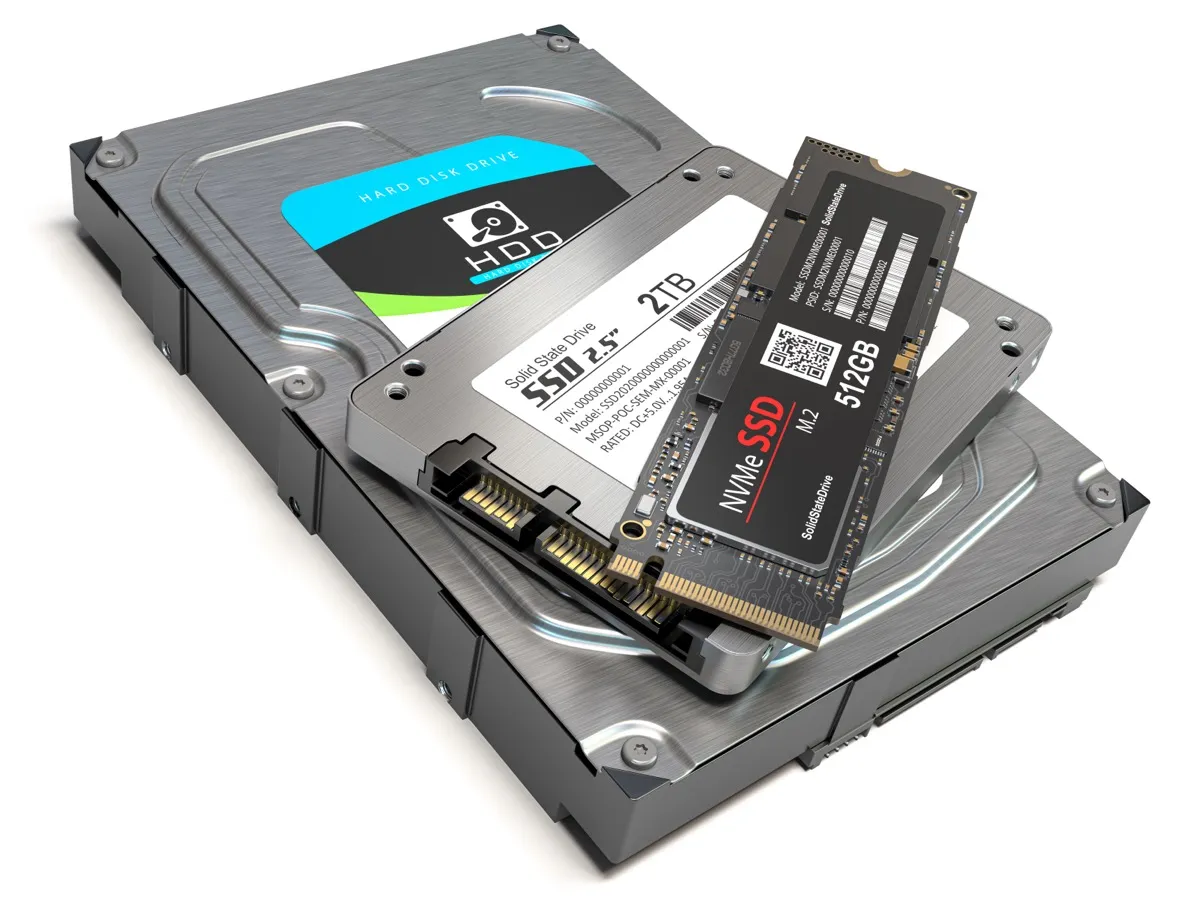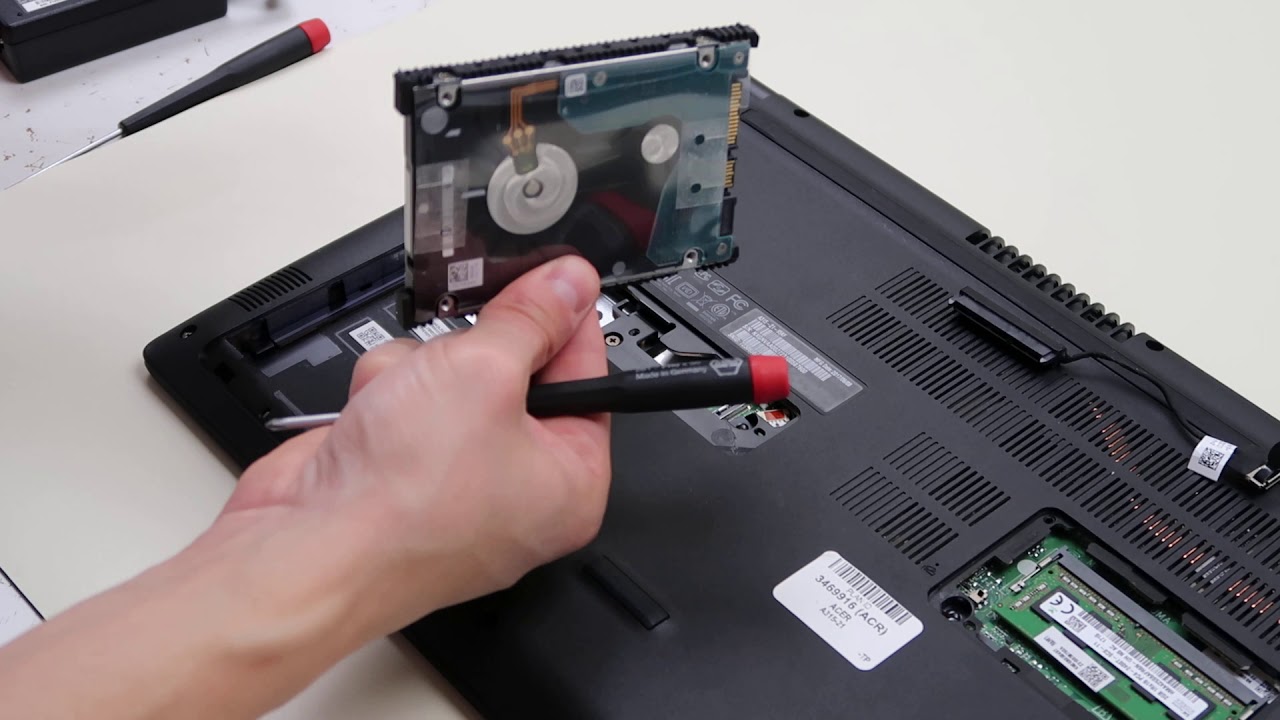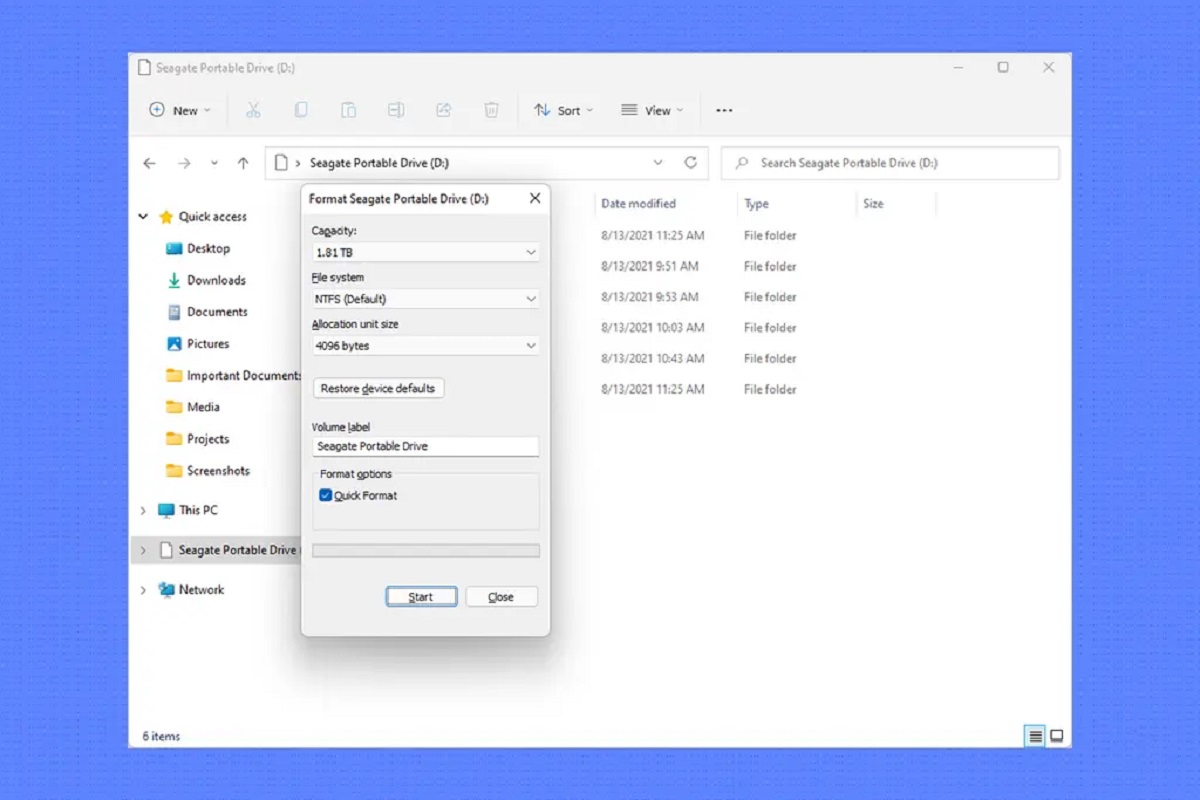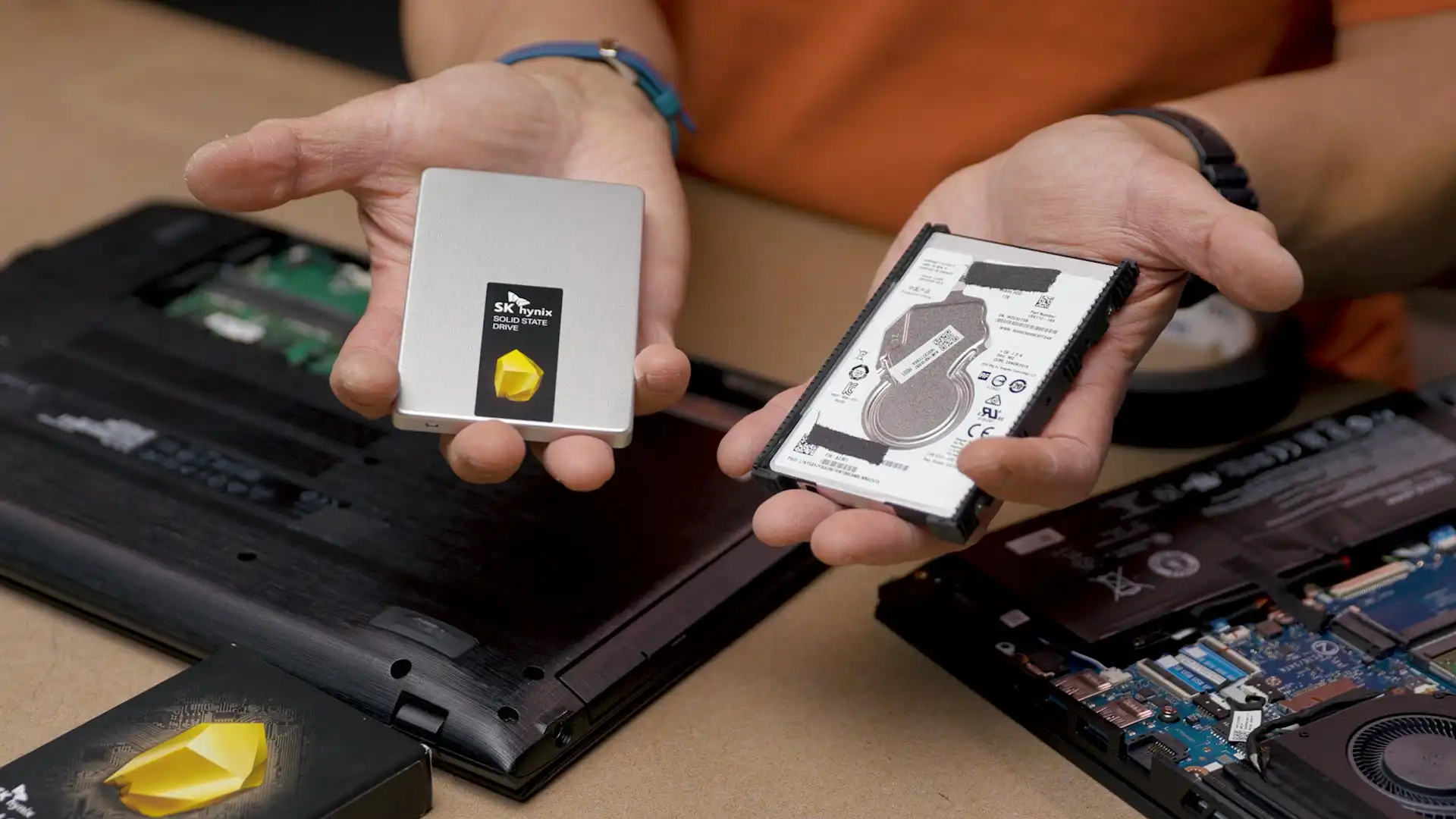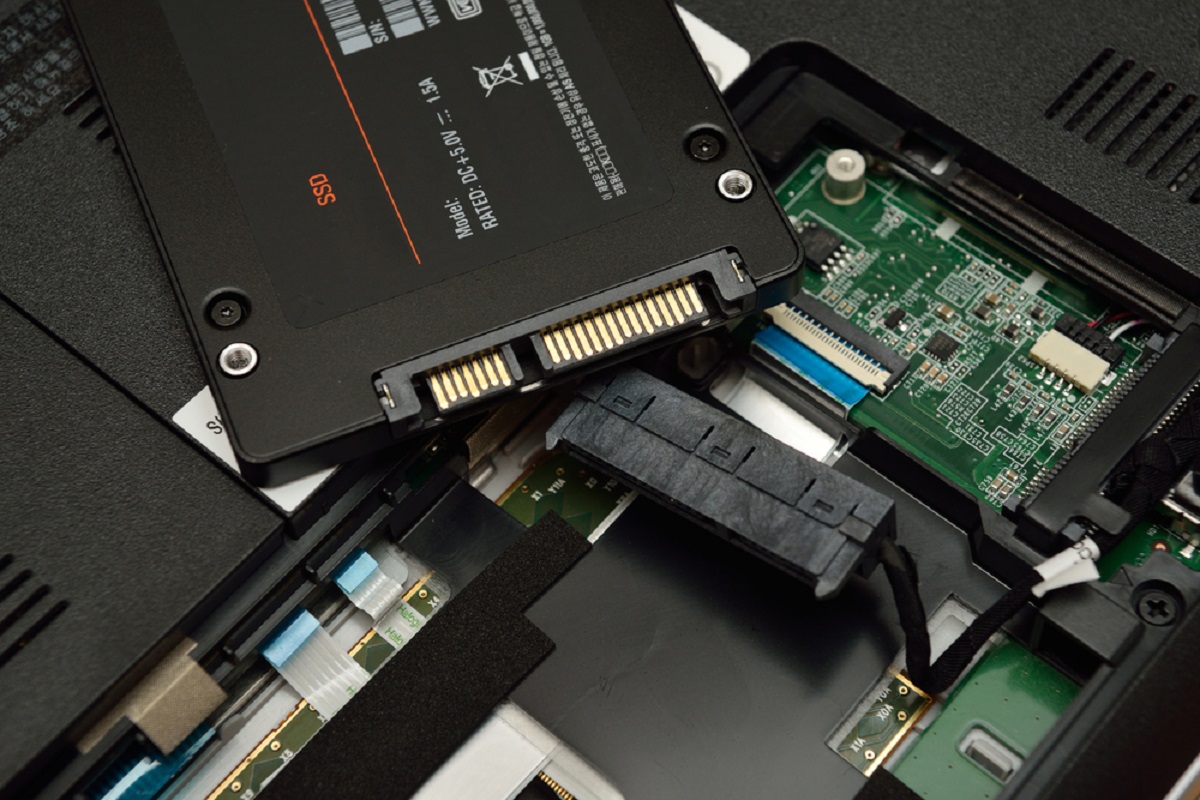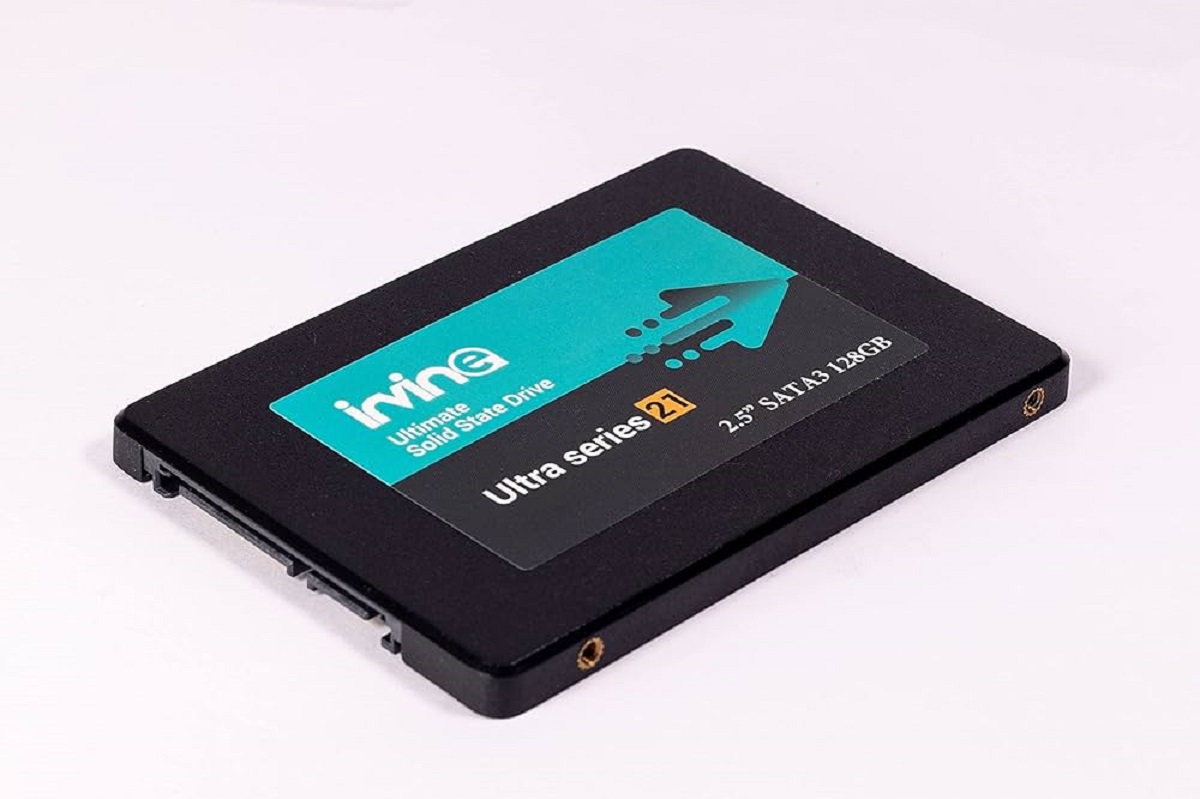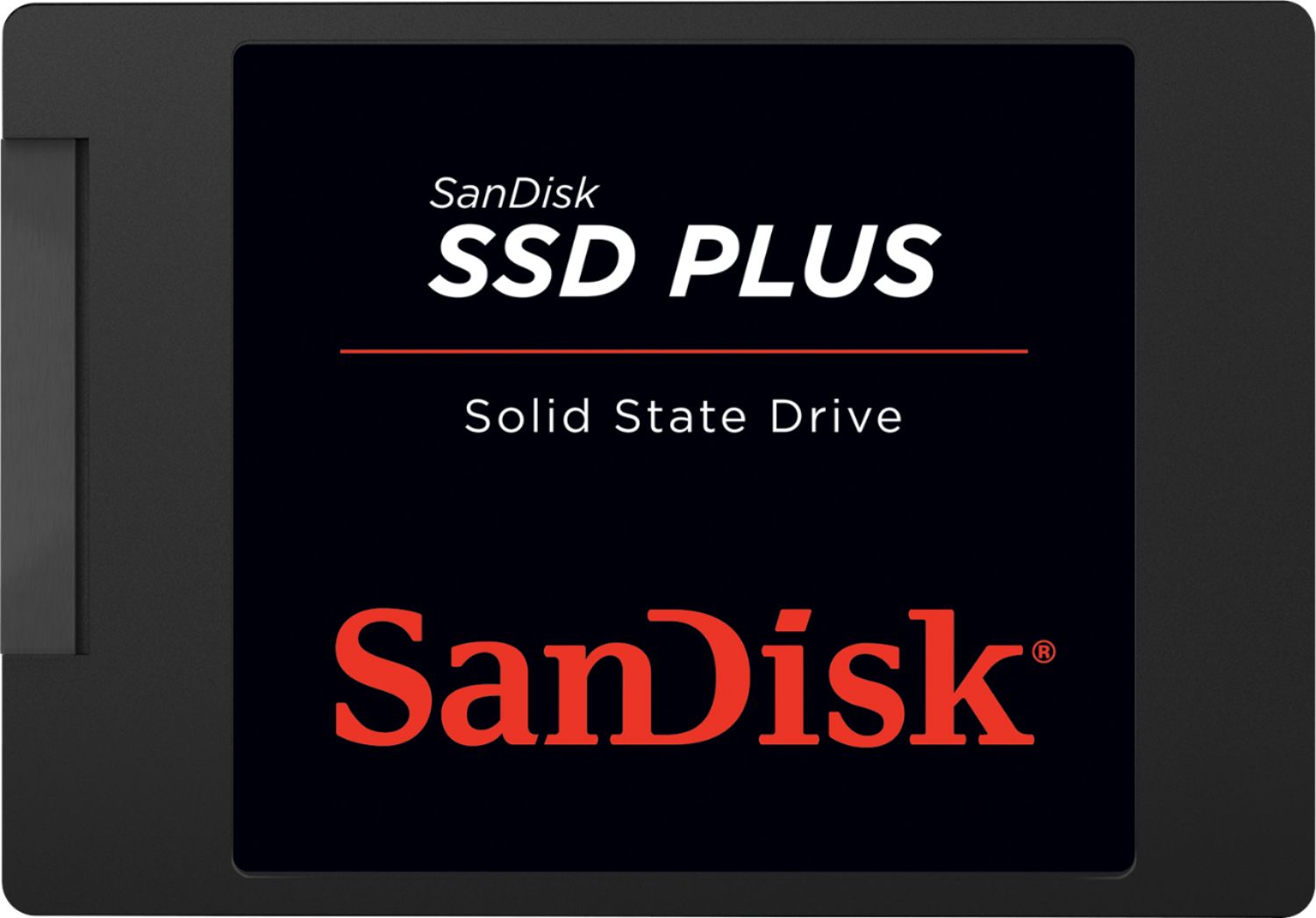Introduction
In the digital age, storage plays a crucial role in our lives. Whether it’s for personal or professional use, having a reliable and efficient storage solution is essential. When it comes to choosing between solid state drives (SSDs) and disk drives (HDDs), it’s important to understand the differences and consider the advantages and disadvantages of each option.
A solid state drive (SSD) is a storage device that uses flash memory to store data. It has no moving parts, making it faster and more durable than traditional disk drives (HDDs). On the other hand, a disk drive (HDD) relies on spinning metal platters and a mechanical arm to read and write data.
Both SSDs and HDDs have their own unique characteristics that make them suitable for different purposes. This article will compare SSDs and HDDs in terms of speed and performance, reliability and durability, power consumption, capacity and cost, noise and heat output, compatibility and versatility. By understanding the strengths and weaknesses of each option, you can make an informed decision based on your specific needs and budget.
It’s important to note that technology is constantly evolving, and what may be true today may not be true tomorrow. However, by understanding the current landscape of SSDs and HDDs, you can make an informed decision that will meet your storage needs both now and in the future.
What is a Solid State Drive (SSD)?
A solid state drive (SSD) is a type of storage device that uses flash memory to store data. Unlike traditional disk drives (HDDs), SSDs have no moving parts, which offers several advantages.
One of the key advantages of SSDs is their speed and performance. Since there are no mechanical components involved in reading and writing data, SSDs can access and transfer data much faster than HDDs. This results in faster boot-up times, shorter file transfer durations, and overall snappier performance. Whether you’re loading a large program or accessing multiple files simultaneously, an SSD can provide a significant boost in speed.
SSDs are also known for their reliability and durability. Without any fragile moving parts, they are less prone to mechanical failure and are better equipped to handle physical shocks and vibrations. This makes SSDs a more reliable storage option, especially for portable devices that are frequently moved or subjected to rough handling.
In addition to their performance and durability advantages, SSDs consume less power than HDDs. This is because SSDs do not require a motor to spin platters or a read/write head to move across them. As a result, not only do SSDs save power, but they also generate less heat. This makes them ideal for laptops and other devices where battery life and cooling are important considerations.
SSDs come in various capacities, ranging from a few hundred gigabytes to several terabytes. However, it’s worth noting that higher capacities come at a higher cost, making SSDs generally more expensive than traditional HDDs. However, the gap in price has been narrowing as SSD technology advances and becomes more affordable.
Another advantage of SSDs is their silent operation. With no moving parts, SSDs produce no noise while in operation. This can be particularly advantageous for users who prefer a quiet environment or need to use their devices in noise-sensitive environments such as libraries or recording studios.
Overall, SSDs offer significant benefits in terms of speed, reliability, durability, power consumption, and silent operation. However, their higher cost per storage capacity compared to HDDs may be a limiting factor for users with large storage needs or tight budgets.
What is a Disk Drive (HDD)?
A disk drive, also known as a hard disk drive (HDD), is a storage device that uses spinning metal platters to store and retrieve data. It has been the traditional storage solution for decades and is still widely used today.
HDDs consist of one or more platters coated with a magnetic material. These platters spin at high speeds, typically ranging from 5,400 to 15,000 revolutions per minute (RPM). An actuator arm with a read/write head moves across the spinning platters to access and modify the data.
One of the main advantages of HDDs is their larger storage capacity compared to SSDs. HDDs are available in a wide range of capacities, from a few hundred gigabytes to multiple terabytes. This makes them an ideal choice for users who require vast storage space, such as those who work with large media files or run data-intensive applications.
While HDDs offer larger storage capacity, they tend to be slower in terms of data transfer rates and access times compared to SSDs. This is because the physical spinning platters and mechanical read/write head require time to locate and retrieve the data. As a result, boot-up times, file transfers, and application loading may take longer compared to SSDs.
Another aspect to consider is the durability of HDDs. Since they have moving parts, HDDs are more susceptible to mechanical failures caused by impacts or jolts. However, modern HDDs are designed with shock resistance features to minimize the risk of data loss from physical shocks. Additionally, HDDs tend to have a longer lifespan compared to SSDs, as the flash memory cells in SSDs degrade over time.
In terms of power consumption, HDDs generally consume more power compared to SSDs. This is due to the spinning platters and moving components that require constant energy to operate. Consequently, laptops and other portable devices equipped with HDDs may experience reduced battery life compared to those with SSDs.
HDDs, like SSDs, can generate heat during operation, but their cooling requirements are generally less demanding. The spinning platters and moving parts of HDDs produce some noise, which can be audible during heavier disk activity. However, the noise levels are often negligible and do not significantly impact user experience.
HDDs have been widely used in various devices, including desktop computers, laptops, external storage devices, and servers. Furthermore, due to their longer existence in the market, HDDs are more affordable compared to SSDs with similar storage capacities. This makes them an attractive choice for users who prioritize cost-efficiency and require large storage capacities.
Overall, HDDs offer larger storage capacities and cost advantages, making them suitable for users who require extensive storage space on a budget. However, their slower speed, lower durability, higher power consumption, and slight noise production may be drawbacks for users seeking faster and more robust storage solutions.
Speed and Performance
Speed and performance are crucial factors to consider when choosing between a solid state drive (SSD) and a disk drive (HDD).
SSDs are renowned for their exceptional speed and performance. Since SSDs have no moving parts and use flash memory, they can access and retrieve data much faster than HDDs. This translates to quicker boot-up times, faster application launches, and reduced file transfer durations. Whether you’re opening large programs, editing high-resolution multimedia files, or multitasking with numerous applications, an SSD can provide a noticeable performance boost.
HDDs, on the other hand, have slower data transfer rates and access times compared to SSDs. This is primarily due to the mechanical nature of HDDs, as the spinning platters and moving read/write heads require time to locate and read data. As a result, processes involving data-intensive operations may take longer with an HDD. However, it’s worth noting that HDDs can still offer satisfactory performance for everyday tasks, such as web browsing, word processing, and media playback.
When it comes to gaming, SSDs are often preferred over HDDs. The faster load times and reduced latency provided by SSDs can significantly enhance the gaming experience. Games can be loaded more quickly, allowing players to jump into their favorite titles without lengthy waiting times. Additionally, SSDs provide smoother gameplay, minimizing the occurrence of stuttering or lag during graphically demanding sections.
Furthermore, SSDs excel in random read and write tasks, which are crucial for overall system responsiveness. Whether it’s launching applications, searching for files, or accessing various data simultaneously, SSDs offer significantly faster response times compared to HDDs.
While SSDs undoubtedly outperform HDDs in terms of speed and performance, it’s important to note that the performance gap between the two has been shrinking over the years. HDD technology has improved, and higher RPMs and larger cache sizes have resulted in faster read and write speeds. However, SSDs still maintain a significant advantage when it comes to overall speed and responsiveness.
Ultimately, if speed and performance are of utmost importance to you, investing in an SSD is highly recommended. The blazing-fast data access and transfer speeds provided by an SSD can greatly enhance productivity, reduce loading times, and improve the overall user experience.
Reliability and Durability
When it comes to storage devices, reliability and durability are essential considerations. Both solid state drives (SSDs) and disk drives (HDDs) have their own strengths and weaknesses in these areas.
SSDs are known for their superior reliability and durability. Since they have no moving parts, SSDs are less susceptible to mechanical failure. This means that the risk of data loss due to physical impact or shock is significantly reduced. Additionally, SSDs are not affected by magnetic fields, making them more resistant to data corruption caused by external factors. These factors make SSDs a more reliable choice, particularly for users who frequently transport their devices or work in environments with a higher risk of physical damage.
Furthermore, SSDs have a longer lifespan compared to HDDs. The flash memory cells in SSDs can handle a larger number of read and write cycles before they start to deteriorate. This means that SSDs can withstand more frequent use and intensive workloads without experiencing significant performance degradation. However, it’s worth noting that over time, the overall lifespan of an SSD will still be affected by the number of write operations it undergoes. Thus, it is essential to consider the workload and usage patterns before making a decision.
HDDs, although not as durable as SSDs, have also made significant improvements in reliability. Modern HDDs are designed with shock resistance features to minimize the risk of data loss from physical impacts. Additionally, the inclusion of advanced error correction mechanisms and SMART (Self-Monitoring, Analysis, and Reporting Technology) features helps to detect and mitigate potential issues, allowing users to take preventive measures before a total failure occurs.
However, HDDs are still more susceptible to mechanical failures due to their spinning platters and moving read/write heads. Mechanical components can wear out over time, causing problems such as disk failure or data access errors. While these failures are relatively rare, they are a risk to consider, especially when handling sensitive or critical data.
In terms of data retention, both SSDs and HDDs are capable of holding data for extended periods. However, SSDs may require power to maintain data integrity over long periods of time, while HDDs do not have this requirement. It’s crucial to keep this in mind if you plan on storing data for long-term archiving purposes.
In summary, SSDs offer better reliability and durability compared to HDDs due to their lack of moving parts and resistance to physical shocks. They also have a longer lifespan, making them a more reliable choice for long-term use. However, HDDs have also improved in terms of reliability and include features to mitigate potential issues. Ultimately, the choice between SSDs and HDDs will depend on the specific needs and priorities of the user.
Power Consumption
Power consumption is an important consideration when it comes to storage devices. The amount of power a device consumes can have an impact on battery life for portable devices and the overall energy efficiency of a system. When comparing solid state drives (SSDs) and disk drives (HDDs), there are notable differences in power consumption.
SSDs are known for their low power consumption. Since SSDs do not have moving parts, they require less energy to operate compared to HDDs. This is because SSDs rely on flash memory chips to store and retrieve data, which consumes considerably less power than the spinning platters and moving read/write heads of HDDs. This lower power consumption translates to longer battery life for laptops, tablets, and other portable devices, making SSDs a popular choice for those who prioritize mobility and energy efficiency.
In addition to consuming less power during operation, SSDs also have the advantage of generating less heat. The absence of mechanical parts means that SSDs produce minimal heat during use. This not only helps in reducing the overall power consumption but also contributes to a cooler and more stable system. It allows for better thermal management, especially in smaller form factor devices, and mitigates the need for additional cooling measures in certain scenarios.
On the other hand, HDDs require more power to operate due to their mechanical nature. The spinning platters and moving read/write heads necessitate a consistent supply of energy. Consequently, HDDs consume more power compared to SSDs, resulting in shorter battery life for portable devices. This higher power consumption also contributes to increased heat output, which can impact the overall temperature and cooling of a system.
However, it’s worth mentioning that advances in technology have led to improvements in power efficiency for both SSDs and HDDs. Modern HDDs feature technologies such as low-power idle modes and optimized power management, which help reduce power consumption when the drive is not in active use. Similarly, SSD manufacturers have also made efforts to enhance power efficiency, though SSDs still maintain a significant advantage in power consumption over HDDs.
When it comes to power consumption, SSDs are the clear winner. With their low power requirements and reduced heat output, SSDs are an ideal choice for energy-conscious users or those who rely on battery-powered devices. However, it’s essential to consider other factors, such as performance and cost, when making a decision between an SSD and HDD to ensure that the chosen storage solution aligns with your specific needs.
Capacity and Cost
When it comes to storage devices, capacity and cost are important factors to consider. Both solid state drives (SSDs) and disk drives (HDDs) offer different options in terms of storage capacity and cost per gigabyte.
HDDs have traditionally been the go-to choice for users who require large storage capacities at an affordable price. HDDs are available in a wide range of capacities, from a few hundred gigabytes to multiple terabytes. This makes them an ideal option for users who need extensive storage space for their files, applications, and media content. HDDs offer cost advantages over SSDs, allowing users to obtain higher capacities at a lower overall cost.
On the other hand, SSDs generally have smaller storage capacities compared to HDDs, although larger capacity options are becoming more readily available. SSD capacities can range anywhere from 128 gigabytes to a few terabytes. However, the cost per gigabyte of storage with SSDs is typically higher compared to HDDs. This is due to the more advanced technology and manufacturing processes involved in producing SSDs. While SSD prices have been gradually decreasing over the years, they still remain at a premium compared to HDDs.
It is important to note that the cost of SSDs has been decreasing, making them more affordable and competitive in terms of cost per gigabyte. Advancements in SSD technology and increased production volumes have contributed to these price reductions. As a result, SSDs have become more accessible to a wider range of users. However, in terms of raw storage capacity, HDDs still offer better value for users who prioritize quantity over speed and performance.
When it comes to determining the appropriate storage solution, users must consider their specific needs and requirements. If you require vast storage space at an economical price, an HDD may be the preferred choice. This is particularly true for users who work with large media files, have extensive software libraries, or need to store vast amounts of data. HDDs provide a cost-effective option without sacrificing capacity.
However, if speed, performance, and reliability are paramount, and you can make do with a smaller storage capacity, an SSD might be the better choice. SSDs excel in delivering faster data access, reduced transfer times, and overall smoother performance. This makes them especially suitable for users who prioritize snappy system responsiveness, quick file transfers, and faster application loading times.
Ultimately, the choice between SSDs and HDDs will depend on your specific needs, budget, and priorities. It’s important to balance capacity requirements with cost considerations to ensure that you select the storage solution that best matches your needs and aligns with your budget constraints.
Noise and Heat Output
Noise and heat output are crucial factors to consider when deciding between a solid state drive (SSD) and a disk drive (HDD). Both SSDs and HDDs differ in their impact on noise levels and heat generation.
SSDs are known for their silent operation. Since SSDs have no moving parts, they do not produce any noise while in use. This makes them an excellent choice for users who value a quiet computing experience. Whether you’re working in a noise-sensitive environment, recording audio, or simply prefer a calm workspace, SSDs provide a noiseless storage option. Additionally, the absence of moving mechanical parts in SSDs reduces the chance of any mechanical noises or vibrations occurring during operation.
HDDs, on the other hand, can produce some noise due to their mechanical nature. The spinning platters and moving read/write heads can generate a low hum or clicking sounds during normal operation. While the noise levels are generally minimal, they can be noticeable in quiet environments. However, with advancements in technology, modern HDDs are designed to operate quietly, and noise should not be a significant concern for most users.
As for heat output, SSDs have the advantage of generating less heat compared to HDDs. SSDs operate using flash memory cells, which consume less power and generate minimal heat during operation. This not only contributes to a cooler overall system, but it also helps maintain stable operating temperatures for components. The lower heat output of SSDs can be beneficial in situations where cooling is a concern or in compact devices with limited airflow.
HDDs, on the other hand, can generate more heat due to the spinning platters and moving mechanical components. The continuous movement creates friction, resulting in heat generation. While HDDs are designed to withstand higher operating temperatures, the increased heat output may require additional cooling measures, especially in systems with limited airflow or in environments with high ambient temperatures.
It’s worth noting that both SSDs and HDDs can benefit from proper ventilation and cooling in order to maintain optimal performance and longevity. Adequate airflow and proper system cooling can help dissipate heat and ensure the storage device operates within safe temperature limits.
In summary, SSDs offer a noiseless storage experience thanks to their lack of moving parts. They generate less heat compared to HDDs due to their lower power consumption. On the other hand, HDDs can produce some noise and generate more heat due to their mechanical nature. While noise and heat output should be considered, they generally do not impact the overall performance or reliability of the storage device.
Compatibility and Versatility
Compatibility and versatility are important considerations when choosing between a solid state drive (SSD) and a disk drive (HDD). Both storage options have their respective characteristics that can affect their compatibility with different devices and their versatility in various usage scenarios.
SSDs, being newer in comparison, are designed to be compatible with a wide range of devices. They utilize the standard SATA interface, which allows them to be easily installed in desktop computers, laptops, and other devices that support SATA connections. Additionally, SSDs have evolved to support newer interfaces like PCIe (Peripheral Component Interconnect Express), which can provide even faster data transfer rates. This makes SSDs compatible with a broader range of systems, including those with limited space where traditional HDDs may be impractical to install.
HDDs, as the more established storage option, have a long history of compatibility with various devices. They utilize the standard SATA interface as well, making them easily compatible with most desktop computers and laptops. Furthermore, HDDs are also available with other interfaces such as eSATA and SAS (Serial Attached SCSI), which are commonly used in enterprise-grade systems that require higher performance or increased data reliability.
In terms of versatility, SSDs have an advantage due to their compact form factor and lack of moving parts. This makes them ideal for portable devices like laptops, tablets, and ultrabooks, where space is limited, and durability is crucial. SSDs can better withstand physical shocks and vibrations, ensuring data integrity even when the device is subjected to rough handling or accidental drops. Additionally, SSDs are more resistant to temperature fluctuations and magnetic fields, making them suitable for demanding environments where data integrity is paramount.
HDDs, although not as versatile as SSDs in terms of physical form factor, excel in storage capacity options. This makes them a popular choice for users who require extensive storage space, such as media professionals, data centers, and those dealing with large files or data sets. HDDs provide a cost-effective solution for long-term storage needs where speed and performance may not be the primary concern.
It’s worth mentioning that compatibility and versatility can also depend on the operating system and software support. SSDs and HDDs are generally compatible with various operating systems, including Windows, macOS, and Linux. However, it’s always a good idea to check compatibility and ensure that the chosen drive is supported by the intended system and software applications.
In summary, SSDs offer excellent compatibility and versatility due to their compatibility with standard interfaces, support for newer technologies, and suitability for portable devices. Meanwhile, HDDs are known for their wide compatibility and extensive storage capacities, making them a preferred choice for users with long-term storage needs. Understanding your specific compatibility requirements and storage needs will guide you toward the storage solution that best suits your situation.
Conclusion
Choosing between a solid state drive (SSD) and a disk drive (HDD) involves considering various factors based on your specific needs and priorities.
If speed, performance, reliability, and energy efficiency are your primary concerns, then an SSD is the recommended choice. SSDs offer lightning-fast data access, reduced boot-up times, and overall snappy performance. They are also more durable and less prone to mechanical failure, making them suitable for portable devices and rough handling. While SSDs generally have smaller storage capacities and higher cost per gigabyte compared to HDDs, their advantages in terms of speed and durability outweigh these considerations for many users.
On the other hand, if vast storage capacity at a lower cost is your priority, then an HDD may be the more appropriate option. HDDs provide cost-effective storage solutions with larger capacities, making them ideal for users who require extensive storage space for media files, software libraries, or data-intensive applications. HDDs do have slower access times, generate more heat, and require more power compared to SSDs, but they still offer reliable and affordable storage options.
Ultimately, the choice between an SSD and an HDD will depend on your specific needs and budget. Consider factors such as speed, performance, reliability, storage capacity, cost, power consumption, and compatibility when making your decision. It’s also worth noting that technology is constantly evolving, and future advancements may further bridge the gap between SSDs and HDDs.
By evaluating your storage requirements and understanding the pros and cons of SSDs and HDDs, you can make an informed decision to ensure you have the best storage solution that aligns with your needs and preferences. Whether you prioritize speed, capacity, or a balance between the two, both SSDs and HDDs offer valuable options to cater to a wide range of storage needs in today’s digital era.







